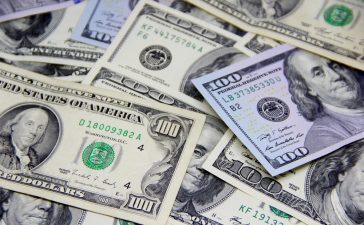The euro was last up 0.38% at $1.0364 after falling as much as 0.44%, while the dollar index was last down 0.23% after rising as much as 0.42%
Trading in the dollar and the euro was volatile on Tuesday, with both currencies trading below their session highs as investors tried to interpret reports that stray Russian missiles may have hit NATO member Poland, killing two people.
The euro had lost ground sharply against the safe-haven dollar while equities pared gains after the Poland reports fuelled fears that the nine-month war between Russia and Ukraine could escalate.
The market is particularly sensitive now that Ukraine has taken back more territory that Russia had captured after the war began, said Marc Chandler, chief market strategist at Bannockburn Global Forex in New York.
The euro was last up 0.38% at $1.0364 after falling as much as 0.44% following the reports from Poland. The dollar index, which measures the greenback against a basket of major currencies was last down 0.23% after rising as much as 0.42% after the reports out of Poland.
News of the explosions had overshadowed earlier gains in the euro after U.S. economic data suggested easing U.S. inflation.
The U.S. producer price index (PPI) increased 8.0% for the 12 months through October compared with economist expectations for 8.3% and September’s 8.4% increase, according to the Labor Department data.
The data, following last week’s smaller-than-expected increase in consumer prices for October, encouraged investors who have been closely monitoring inflation data for signs that the Federal Reserve could slow its interest rate hikes, which are aimed at dampening soaring prices.
Risk appetite has improved. That tends to weaken the dollar, said Karl Schamotta, chief market strategist at payments company, Corpay.
Fed officials will need to see many months of this before they pause the rate hike cycle but overall price pressures appear to be going in the right direction, said the strategist who says the dollar likely peaked in September.
Before the U.S. data the euro, sterling and the Swedish crown had already risen sharply against the dollar as traders assessed a slew of economic data, including British and euro zone job figures, plus German economic sentiment.
In Europe traders were also eying encouraging data such as German economic sentiment ZEW index, which rose in November.
Data also showed employment in the single currency area rose in the third quarter.
The dollar index had fallen earlier in the day to a session low of 105.34, its lowest point since August.





